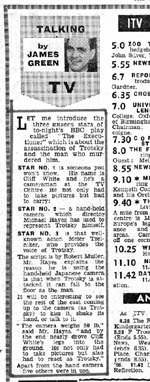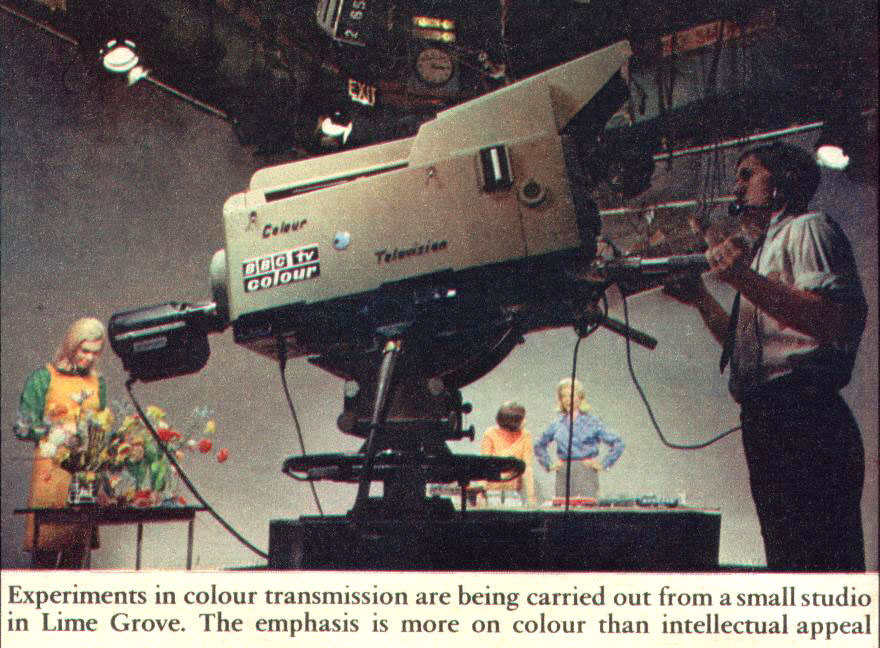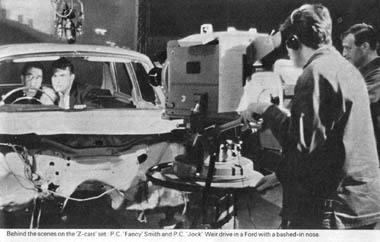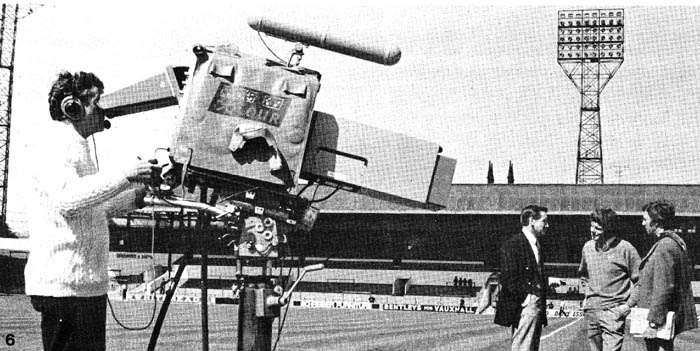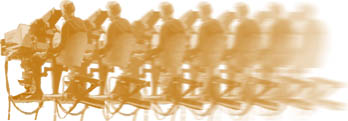The next item from my archives is a picture which was given to me by a press photographer covering the official
visit by Her Majesty Queen Elizabeth the Queen Mother to the recently opened Television Centre on February 15th 1961.
This was during my spell with crew 10, and the senior cameraman on the front of the “Mole” crane is Peter Hills. Swinging the
crane-arm is Peter Ward, and that’s yours truly behind the steering wheel, in my natty sleeveless pullover, talking to a press
reporter. Second-in-command on the crew, operating the camera on the left, is Tony Abbey, being driven on the Vinten “Heron”
by Barry Webb, who is talking to a camera trainee named Brian Kingston.
For the studio part of her tour, the Queen Mother was brought to TC3, where we were rehearsing for that afternoon’s transmission
of “Wednesday Magazine”; hence the presence of David Jacobs, Ron Moody (dressed as Fagin), and John Gielgud. But other
personalities were obviously brought in, because I can see Richard Dimbleby in the background, talking to Hugh Carleton-Greene.
And that’s about as far as my memory goes on this one. Perhaps your readers can come up with the names of some of the BBC
dignitaries surrounding the Queen Mum.
When she had finished meeting the people in the line-up, she looked straight at me, and started to walk towards me. I felt
sure she was going to say something about the huge camera-crane that I was driving, but she was deftly steered back on to
her planned itinerary by a Palace official, so I shall never know! |
|
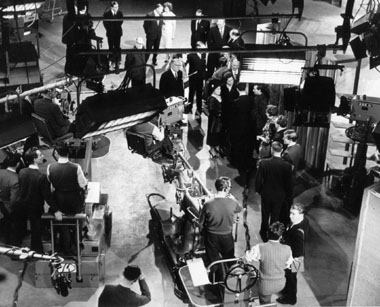 |
